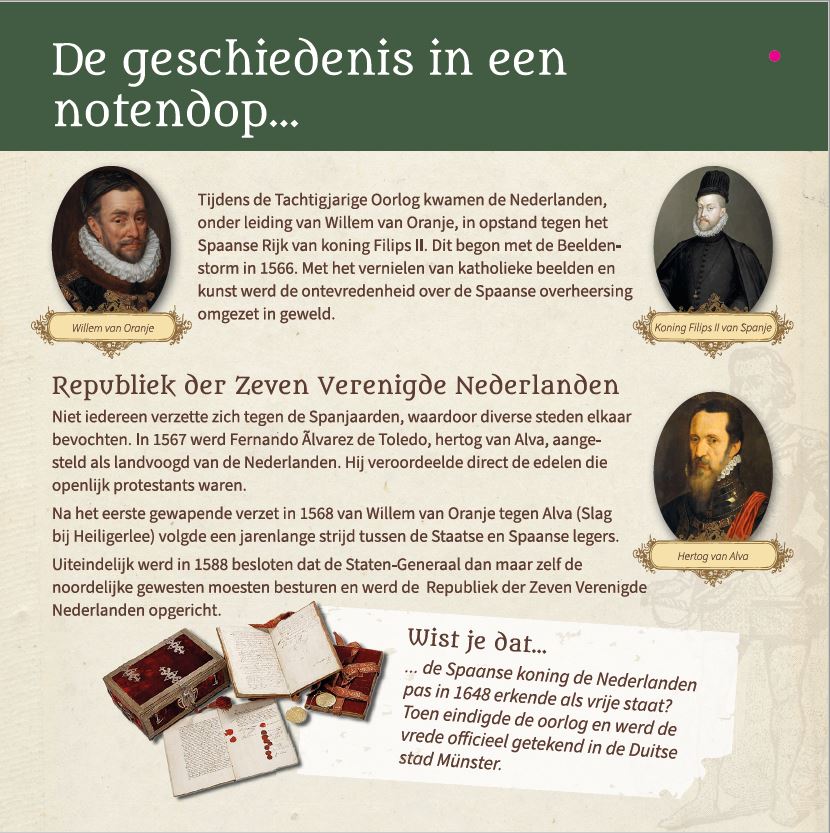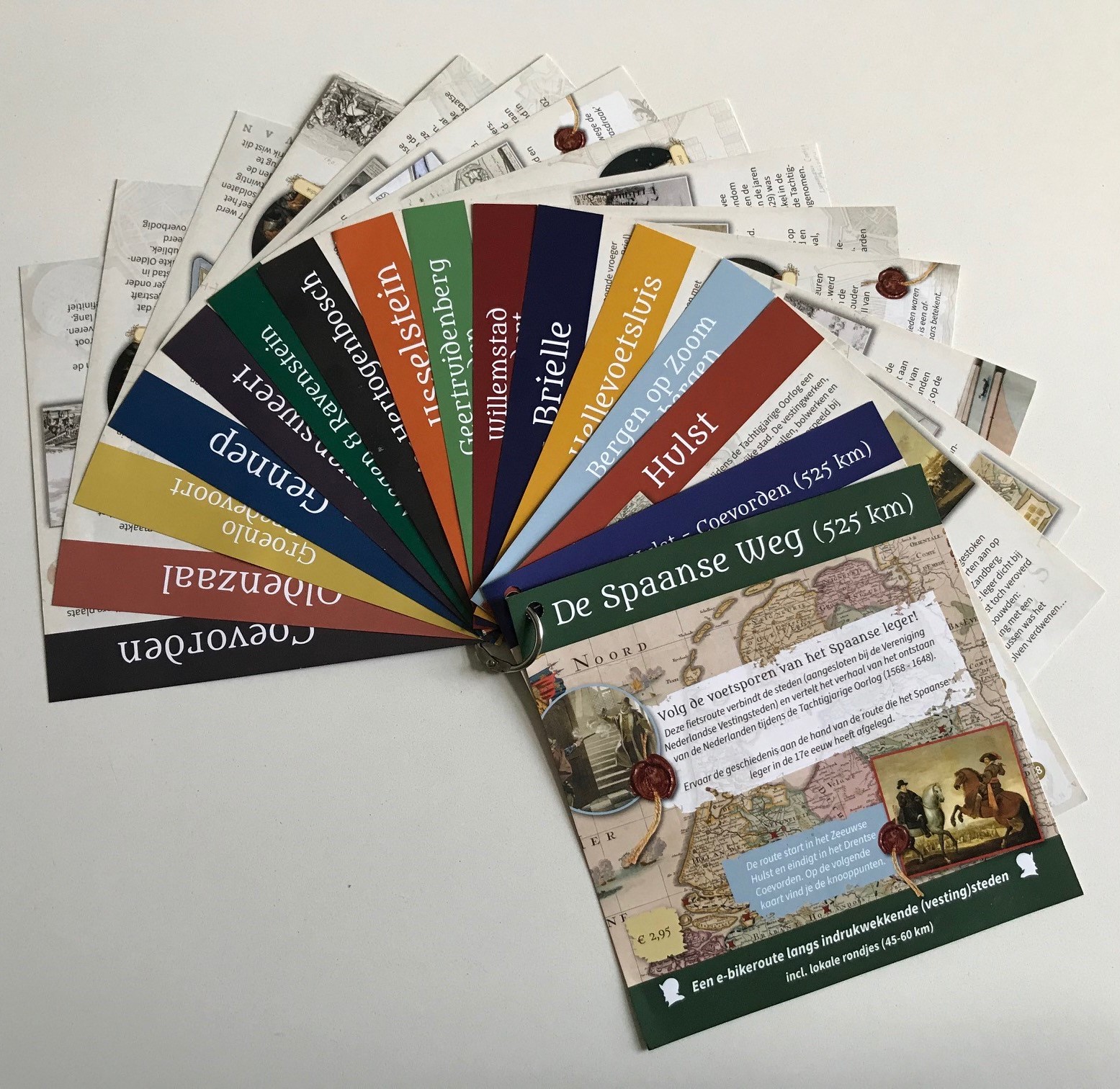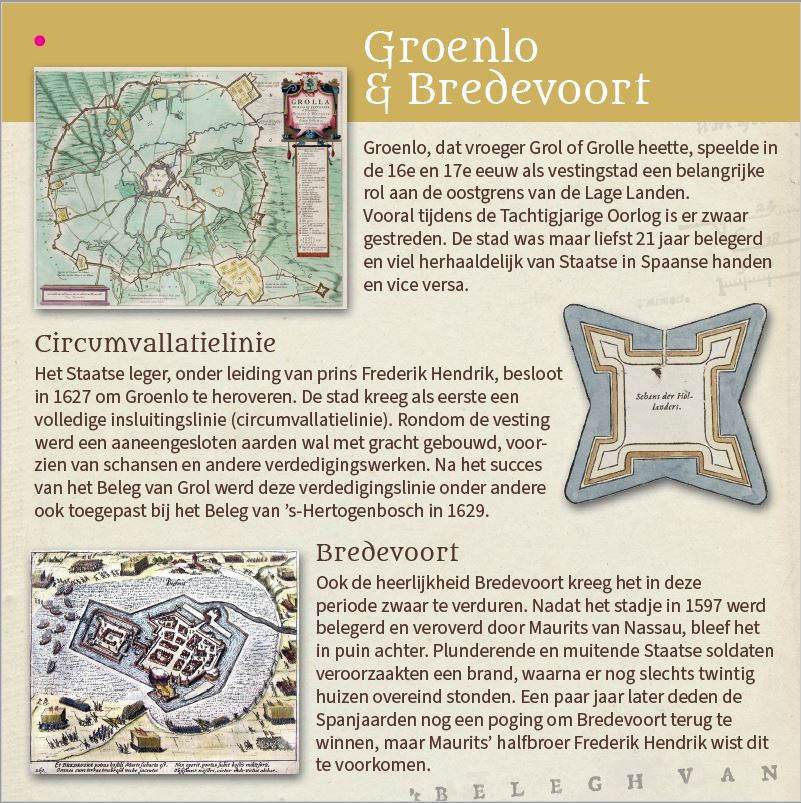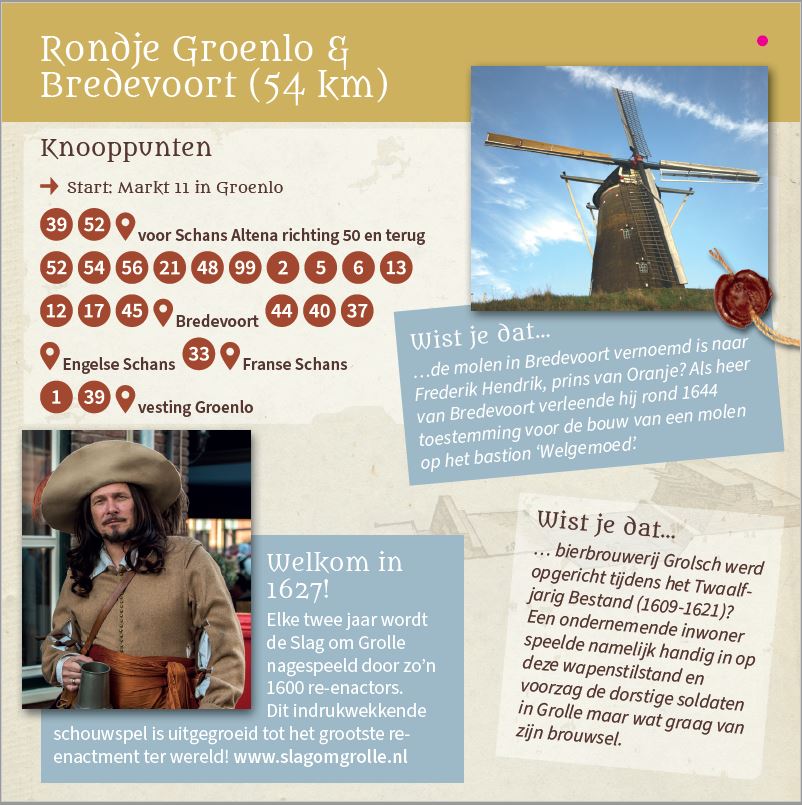Assignment
Developing a long-distance E-bike route with several local loops for 20 cities, some of which are united in the Association of Dutch Fortress Cities. The route connects the cities and tells the story of the origins of the Netherlands. This origin story is largely anchored in the Eighty Years’ War. This cultural route will be the start of broad European cooperation. A cooperation that should lead to the development of the ‘Spanish road’; a cultural, European route where people will experience European history on the basis of the route the Spanish army took through Europe in the 17th century. Cycling the Spanish road will be a journey where people will experience European identity in a new way.


Gemaakt
We have created a route chart with loose sheets secured with a ring. The basis for the route and the historical stories are the 20 fortified towns. These towns lie along a ribbon of over 500 kilometres. For each city, an E-bike tour has been developed with start and finish in the city. These local tours have been combined into one long-distance E-Bike route from Hulst in Zeeland to Coevorden in Drenthe. Thus, one has the choice of cycling the Spanish Way in an arrangement form, staying overnight along the way in the participating cities, or on a stage-by-stage basis. The route fan is on sale for €2.95. In addition to these route fans, each town has received its own fan sheet to promote the Spanish Way.



Customer
The Spanish Road is an initiative of Bernou Wagenaar, policy officer for Tourism Municipality of East Gelre, in cooperation with the Association of Dutch Fortress Cities.
Participating cities:
– Hulst
– Bergen op Zoom
– Steenbergen
– Willemstad
– Klundert
– Brielle
– Hellevoetsluis
– Geertruidenberg
– Heusden
– IJsselstein
– ‘s-Hertogenbosch
– Megen
– Ravenstein
– Grave
– Stevensweert
– Gennep
– Bredevoort
– Groenlo
– Oldenzaal
– Coevorden